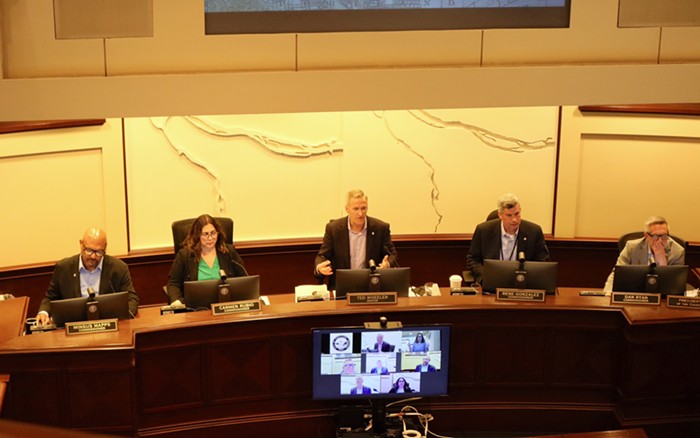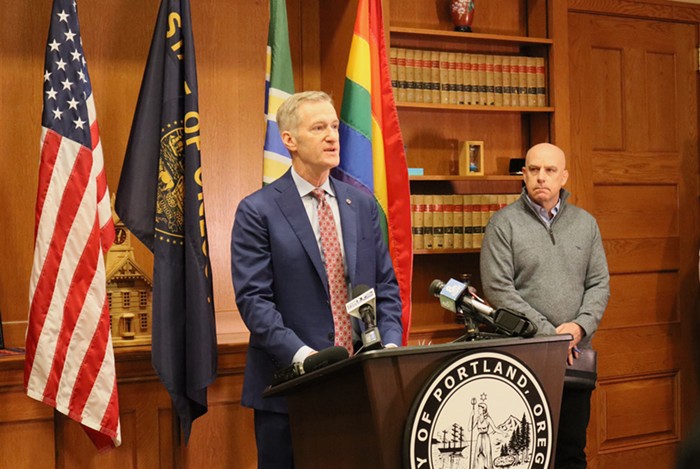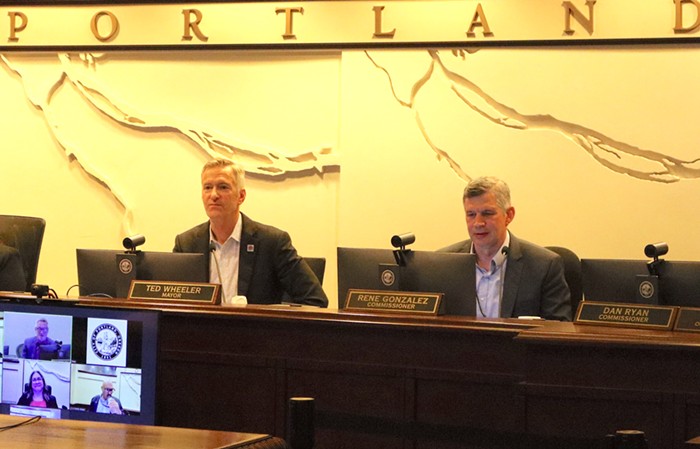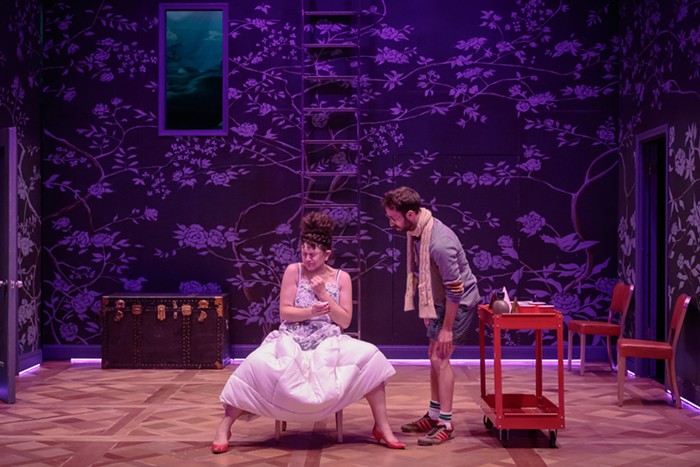IF ALL GOES according to plan, a new kind of building will be born on SW 5th and Montgomery by 2013. Packed with offices and retail, the Oregon Sustainability Center (OSC) will generate as much energy as it produces and reuse every drop of water that flows through its taps (and, yes, even its toilets). A marvel of modern, green design, the center will inspire builders internationally to look to Portland as a beacon of innovative design.
But is spending more than $60 million in public funds on a new, experimental construction project actually, well, sustainable? That's the question architects and politicians (hopefully) will tackle this week, when the OSC's final design goes to public comment.
The first official version of the OSC design was a $75 million, eight-story cylindrical building topped by a giant, leaf-shaped solar panel array ["Seeing Green," News, Aug 12, 2010]. After eight months of redesign, the building's new look is less gaudy and whacks $10.4 million off the price tag: It's now a $64.6 million seven-story rectangular office building with ground-floor retail—split in the middle by a public plaza where the streetcar will run.
In addition to a gleaming skin of photovoltaic cells, the building will include its own geothermal wells, dug onsite, and a 200,000-gallon cistern for collecting rainwater. Project backers aim to have it meet an international Living Building Challenge, recognizing buildings that have net-zero energy and water use, and are toxin free.
All that innovation comes at a cost. The city and the Oregon State University system are partnering on financing the center, with $45.2 million in bonds, $6.7 million in urban renewal money, $3 million in cash from the university, and $2.5 million in state and federal tax credits. Rerouting the streetcar alone will cost $4 million, a little bit less than the project's persistent $5 million budget gap. Planners argue the cost is worth it to showcase—and expand—green building technology in Portland.
"There's a premium to being a prototype and the first of a kind," says Lisa Abuaf, project manager for the Portland Development Commission, who compares it to the city's aggressive pursuit of LEED green-building certification for publicly owned buildings. "We want this to be a replicable model for private industry, so the premium will come down."
Current plans call for moving the Portland Bureau of Planning and Sustainability (BPS) into the center at an estimated cost of $32 million over 30 years. BPS is currently housed in the 1900 Building, itself a recently constructed building on which the city still owes $13 million.
The director of BPS' sustainability division, Michael Armstrong, acknowledges that there is nothing wrong with their current office space.
"We see this building as a major contribution to the building market. And it's a positive investment, rather than leaving something that doesn't work," says Armstrong. "It's an investment in economic development that takes the form of a real estate deal."
Consensus among local architects and critics is that the new design is a big improvement, but that the fundamental idea of constructing a new building is less green than retrofitting an existing structure.
Architect Rick Potestio (who compares the old design to a "hat you'd wear to a royal wedding") says he celebrates the city's investment during the down economy, but that there's a huge argument for restoring an old building for the center.
"Reuse, renovate, restore are the most sustainable strategies you can take," says Potestio.
"Starting from scratch when you have a couple of wonderful options of existing buildings is unsustainable," agrees Portlandarchitecture.com Editor Brian Libby, who points to the US Custom House on NW 8th as a notably vacant building. "I don't understand why an existing building couldn't have been incorporated into the living building prototype."
The building—though not its aesthetics, which suffer from "design by committee"—gets applause from Erica Dunn and Jonathan Dunn (no relation), who sit on the local American Institute of Architects Committee on the Environment. The OSC is expensive, they write via email, but environmentally inefficient buildings will wind up costing us even more because of climate change.
"As with anything innovative, you need the vanguard to jump in before it can become economically feasible for all."



















